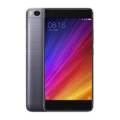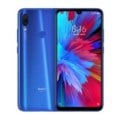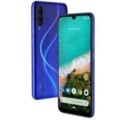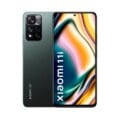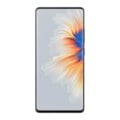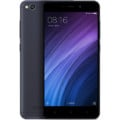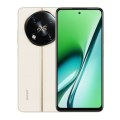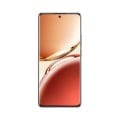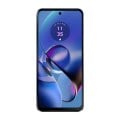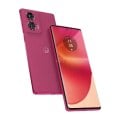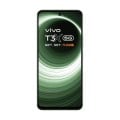Xiaomi Redmi Watch 2
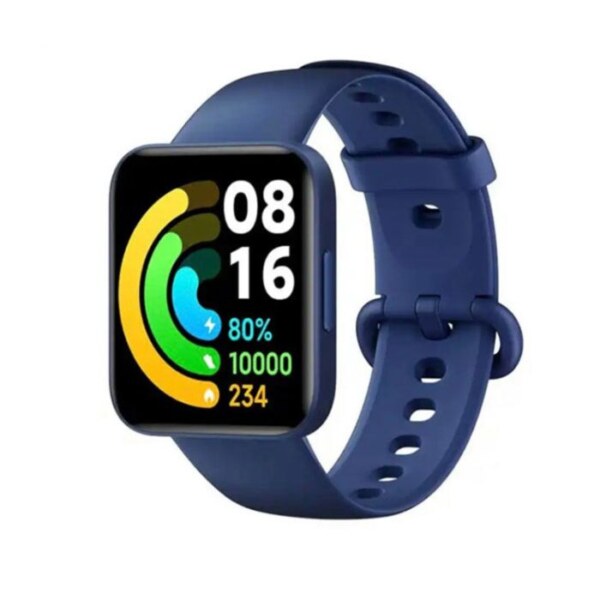

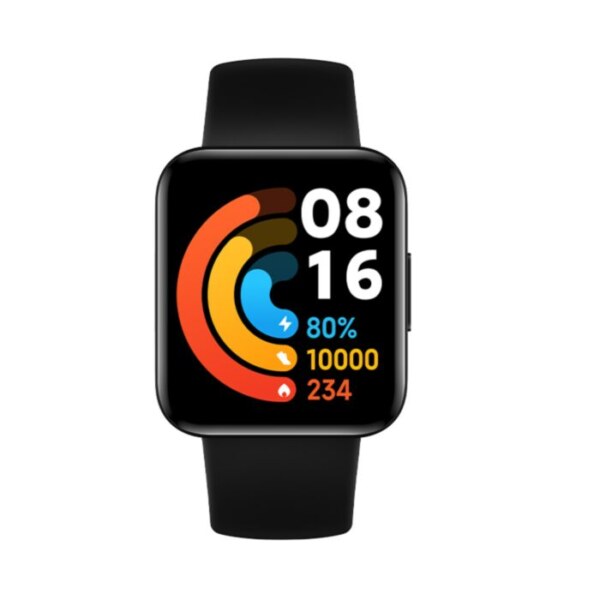
-
Processor: Unknown
-
RAM: Unknown
-
Storage: Unknown
-
Display: 1.6 inches
-
Camera: None
-
Operating System: Proprietary OS
Xiaomi Redmi Watch 2 - PRICE
-
 Black/Blue/White
From $79
Black/Blue/White
From $79
View Offer
Xiaomi Redmi Watch 2 is officially announced on Oct. 28, 2021.
The smartwatch features 1.6 inches AMOLED capacitive touchscreen that provides a resolution of 360 x 320 pixels while the PPI density is 301. The dimension of the Xiaomi Redmi Watch 2 is 39.1 x 34.4 x 10 mm and it weighs 31 grams.
It is Waterproof (5ATM) + 50m water-resistant while the device can be paired with the help of Bluetooth 5.2. It is available in various colors such as Black, Blue, and Ivory.
The Redmi Watch 2 is fueled with a Non-removable Li-Ion 230 mAh battery while the sensors include an Accelerometer, heart rate, compass, and SpO2. The device is built with a plastic back and plastic frame.
The device features IM and Email facilities along with Waterproof (5ATM). For the latest phones and tablets, check out giztop.com and get the best deals, coupons, offers, comparisons, reviews, and more!
Xiaomi Redmi Watch 2 - SPECIFICATIONS
General
-
ModelXiaomi Redmi Watch 2
-
ReleasedOct. 28, 2021
-
StatusComing Soon
Design
-
Type Design Type called form factor refers to a mobile phone's size, shape, and style as well as the layout and position of major components of phone. There are three major form factors seen in mobile phones => bar phones, folding phones and sliding phones.Bar
-
Dimensions39.1 x 34.4 x 10 mm
-
Weight31 Grams
-
WaterproofWaterproof (5ATM) + 50m water resistant
Display
-
Display Type Display Technology => A number of display technologies and types used in mobile phones => TFT (Thin Film Transistor), IPS (In-Place Switching), OLED (Organic Light Emitting Diode), AMOLED (Active-Matrix Organic Light-Emitting Diode), Super AMOLED (an even advanced version of AMOLED), Resistive Touchscreen (Resistive touchscreens contain two layer of conductive material with a very small gap between them which acts as a resistance), Capacitive Touchsceen (Capacitive touchscreen technology consists of a layer of glass coated with a transparent conductor)AMOLED
-
Size1.6 inches
-
Resolution360 x 320 pixels
-
Display Colors Display Colors is refers to the number of different shades of colors that the screen is capable of displaying => 64K colors, 256K colors and 16 million colors, Obviously 16M is highest available range of colors and better than others.16M colors
-
Pixel Density Pixel Density (PPI) is refers to the concentration of pixels on a particular display, measured in pixels per inch (ppi). Pixel density is calculated by dividing the diagonal pixel resolution of a display by its diagonal size, higher pixel density better display quality.~301 ppi density
Hardware
-
Memory Card Slot Memory Card Slot is a special slot for inserting a memory card. Memory cards allow you to expand the phone's built-in memory, A memory card (sometimes called a flash memory card or a storage card) is a small storage medium used to store data such as text, pictures, audio, and video, for use on small, portable or remote computing devices such as mobile phones, mp3 players, digital cameras.No
-
Sensors Sensors are electronic components that detects and responds to some type of input from the physical environment. The specific input could be light, heat, motion, moisture, pressure and location, The output is generally a signal that is converted to use in computing systems, a location sensor, such as a GPS receiver is able to detect current location of your electronic device.Accelerometer, heart rate, compass, SpO2
Software
-
Operating System OS => Every computer system run on a base software called Operating System (OS). Operating System controls all basic operations of the computer (such as smartphone, PDAs, tablet computers and other handheld devices). The Operating System allows the user to install and run third party applications (apps), apps are used to add new functionality to the device.Proprietary OS
Camera
-
Rear Camera Camera is able to capture photographs and usually videos, The most important characteristics of a camera are the resolution (measured in megapixels), lens focus type (fixed or automatic), higher megapixel cameras are known to capture higher quality photos, but not always a good measurement of the photos quality.No
-
ImageNo
-
VideoNo
-
Flash Flash Light => There is commonly two types of flash lights are used in camera mobile phones, LED Flash (LED flash offers lower power consumption with drive circuitry that takes up very little room, LEDs can be strobed faster than any other light source), Xenon Flash (xenon flash produces an extremely intense full-spectrum white light for a very short duration)No
-
Front CameraNo
Network
-
SIM SIM (Subscriber Identity Module) is a small card that contains mobile network subscriber's account information. This allows the phone using the card to attach to a mobile network. The SIM card is most commonly associated with GSM and UMTS mobile networks. Moving a SIM card from one phone to another allows a subscriber to switch mobile phones without having to contact their mobile network carrier. SIM cards can also be used by a phone to store limited amounts of data, such as phone numbers and text messages.Standard SIM
-
Dual SIMNo
Connectivity
-
Wi-fi Wi-Fi is a popular wireless networking technology using radio waves to provide high-speed network connections that allows devices to communicate without cords or cables, Wi-Fi is increasingly becoming the preferred mode of internet connectivity all over the world.No
-
USBNo
-
GPS GPS The Global Positioning System is a satellite-based radio navigation system, GPS permits users to determine their position, velocity and the time 24 hours a day, in all weather, anywhere in the world, In order to locate your position, your device or GPS receiver must have a clear view of the sky.No
-
NFC NFC (Near field communication) is a set of standards for smartphones and similar devices to establish peer-to-peer radio communications with each other by touching them together or bringing them into proximity, usually no more than a few inches.Yes
-
Wireless Charging Wireless Charging (Inductive Charging) uses an electromagnetic field to transfer energy between two objects. This is usually done with a charging station. Energy is sent through an inductive coupling to an electrical device, which can then use that energy to charge batteries or run the device.No
-
Headphone JackNo
Battery
-
Capacity Battery CapacityLi-Ion 230 mAh
-
PlacementNon-removable
Media
-
Video PlaybackNo
-
Video OutNo
-
FM RadioNo
-
Ring TonesNo
-
LoudspeakerNo
-
HandsfreeNo
Data
-
4G LTE 4G LTE bandsNo
-
5G NR BandsNo
-
SpeedNo
Messaging
-
SMS SMS (Short Messaging Service) is a text messaging service component of phone, Web, or mobile communication systems. It uses standardized communications protocols to allow mobile phone devices to exchange short text messages over the networks.No
-
MMS MMS (Multimedia Messaging Service) is a standard way to send messages that include multimedia content (audio clips, video clips and images) to and from mobile phones over wireless networks using the WAP protocol.
-
Email Email (Electronic Mail) is a system for receiving, sending, and storing electronic messages, Similar to a letter, email is text messages that may contain files, images, or other attachments sent via the internet to a recipient by using applications and software prograps. An email address is required to receive email, and that address is unique to the user.Yes
-
IM IM (Instant Messaging) is an exchange of text messages through a software application, it enable you to create a kind of private chat room with another individual in order to communicate in real time over the Internet.Yes

